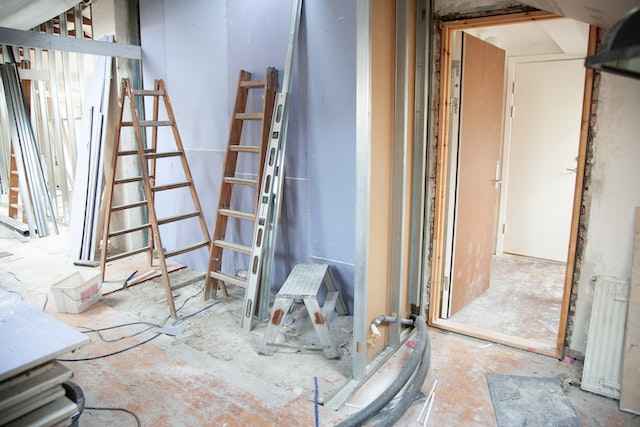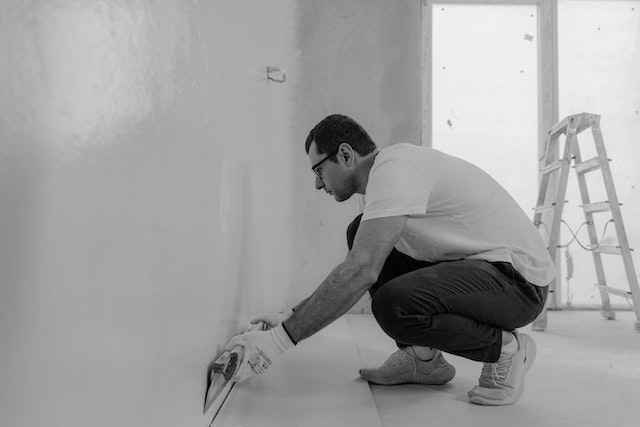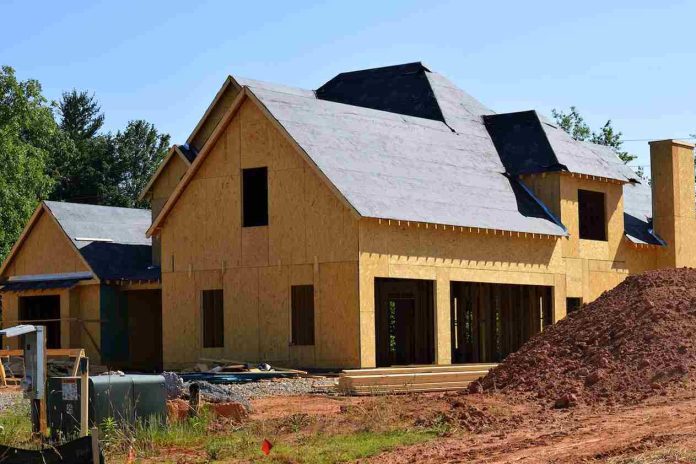Building a new home is an exciting and demanding experience. Whether you’re starting from scratch or renovating an existing property, the process can seem overwhelming.
You’ll face challenges like navigating complex building regulations and codes, finding a trustworthy and experienced contractor, and sticking to a budget.
But building your dream home can be a smooth and enjoyable experience with the proper guidance and preparation. This guide will walk you through the process of turning your blueprints into reality.
Table of Contents
Step 1: Plan And Design
The planning and designing phase of building a new home is a crucial step in the process. This is where you turn your vision and ideas for your new home into a concrete plan that can be executed. During this phase, you will consider your budget, the size and layout of your home, and the materials and finishes you want to use.
One of the first steps in the planning and design phase is to work with an architect or designer to create a detailed set of blueprints for your home. This includes determining the number of rooms, the size of each room, and the overall layout of your home. You will also work with your architect to create a functional and aesthetically pleasing design, considering the orientation of your lot, the surrounding landscape, and your style preferences.
In addition to the design and layout of your home, the planning and design phase also involves selecting materials and finishes. This includes everything from flooring and countertops to fixtures and hardware. During this phase, you will need to consider each material’s durability, cost, and aesthetic appeal and how they will work together to create the look and feel you want for your home.

Step 2: Securing Funding
This phase involves identifying the sources of financing that will be used to pay for the construction of your home, as well as determining the best financing options for your situation. There are several common funding sources to consider, including:
- Savings: One of the simplest ways to fund the construction of your new home is to use your savings. This can be a good option if you have a substantial amount of money saved, but it may not be feasible for everyone.
- Mortgages: Taking out a mortgage is one of the most common ways to finance the construction of a new home. This involves borrowing money from a bank or lender and paying it back over time, with interest. When applying for a mortgage, you must consider factors such as your credit score, income, and debt-to-income ratio.
- Help to Buy: The UK government’s Help to Buy scheme offers financial support to homebuyers struggling to save for a deposit or obtain a mortgage. This scheme can be used to help fund the construction of a new home.
- Equity Release: If you already own a home, you may be able to use your existing equity to fund the construction of your new home. This involves taking out a loan that is secured by the equity in your current home and using the funds to pay for the construction of your new home.
It is important to consider your funding options carefully, as each has advantages and disadvantages. It is a good idea to consult with a financial advisor or loan officer to help determine the best financing option for your situation.
Step 3: ChooseA Builder
Choosing the right contractor is a crucial step in building a new home. This phase involves finding and selecting a builder who will be responsible for constructing your home according to your specifications and within your budget. You can easily find builders near you with MyBuilder. MyBuilder will connect you with local builders who are experienced and have been vetted to provide the best services. When choosing a builder, it is important to keep the following factors in mind:
- Experience: The builder should have a proven track record of building quality homes and should be able to provide references and examples of their previous work.
- License and Insurance: The builder should be licensed and insured, as this will provide you with protection in the event of any accidents or damages during the construction process.
- Budget: The builder should be able to work within your budget and provide a detailed estimate of the construction cost, including all materials and labour costs.
- Communication and Collaboration: The builder should be willing to work closely with you throughout the construction process and should be open to making changes and adjustments as needed.
You should try to get multiple quotes from different builders and compare their proposals to determine which builder best fits your needs and budget. You may also want to consider hiring an independent inspector to inspect the work of your chosen builder throughout the construction process to ensure that the work meets your expectations and standards.

Step 4: Start Construction
The start of construction is a critical phase in building a new home, as this is when your vision starts to take shape and become a reality. During this phase, the following steps will typically take place:
- Site preparation: The contractor will prepare the site for construction by clearing the land, grading the ground, and installing necessary utilities and services.
- Foundation work: The contractor will build the foundation for your new home, which may involve pouring concrete or laying blocks.
- Framing: The contractor will construct your home’s frame, which serves as the skeleton for the rest of the structure.
- Rough-in: The contractor will install the rough electrical, plumbing, and HVAC systems, which will be hidden behind the walls of your home.
- Drywall: The contractor will hang drywall and finish the interior walls of your home in preparation for painting or wallpapering.
- Roofing: The contractor will install the roof to protect your home from the elements.
It is important to be involved in the start of the construction process and to monitor the progress of the work being done. You should also maintain open communication with your contractor to address any questions or concerns promptly.
Step 5: Final Inspections and Occupancy
The final inspections and occupancy phase is the last step in building a new home and is when you can move in and start enjoying your new living space. During this phase, the following steps will typically take place:
- Final inspections: Your contractor will arrange for final inspections of the electrical, plumbing, and HVAC systems, as well as the overall structure of your home. The inspector will ensure that all work has been completed to the relevant codes and standards and will provide you with a report.
- Punch list: Your contractor will conduct a punch list, a comprehensive list of items that need to be completed or corrected before you can occupy your new home.
- Occupancy permit: Your contractor will apply for an occupancy permit, a certificate confirming that your home is safe to occupy.
- Final walk-through: Your contractor will conduct a final walk-through of your new home, during which you can inspect the work and identify any final issues that need to be addressed.
- Move-in: Once the final inspections and occupancy permits have been obtained, you can move into your new home and enjoy your new living space.
It is important to be thorough during the final inspections and occupancy phase, as this is your last chance to ensure that your home has been built to your standards and expectations.
After inspections have been completed, you can begin the next stages of moving into your new home. This is when the next exciting chapter begins – starting fresh in a new home you got to design.














